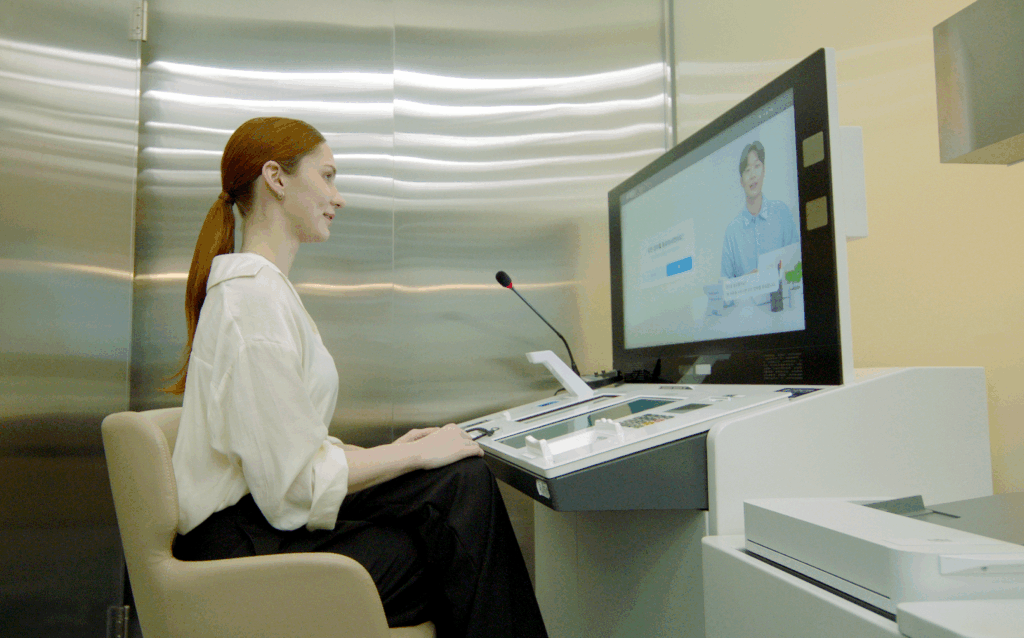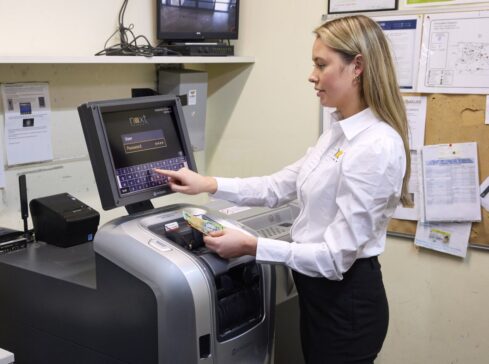Bank branches have long been established as a representative channel for financial services. However, the spread of digital banking and changes in customer behavior, expectations, and approaches are redefining the role of physical branches. Unique functions such as complex financial consultations, document processing, and large cash transactions are difficult to fully replace with digital channels, so branches remain necessary spaces for consumers.
Customers still feel they prefer human interactions, but not all transactions need to be conducted face-to-face. A significant portion of tasks carried out in physical branches consist of repetitive and standardized processes, which is a major driver of high labor operating costs. Therefore, digital branch transformation should start with strategically determining which areas should be automated with technology and which require human involvement. The key is to simultaneously improve customer experiences while achieving operational efficiency and cost reductions. In this context, self-service technology should not be seen as mere equipment, but as a structural asset that redefines branch operations.
Self-service solutions like STMs (Smart Teller Machines) and the Digital Desk™ are exceptional devices to drive efficiency in these repetitive and low-value transactions, allowing employees to focus on more complex, high-value tasks. Such technologies should be introduced not to reduce the number of in-branch staff, but as tools to enhance the quality of customer service. Essentially, branches should seek to automate simple tasks and reduce wait times through the self-service channel, while still allowing customers to interact with staff as needed.
Driving Scalable Self-Service Channels and Expanding Services
A key challenge in branch digitalization strategy is the implementation of omnichannel. Self-service channels have evolved beyond simple cash deposits and withdrawals to become multifunctional devices covering a wide range of services; such as applying for new savings and deposit accounts, card issuance, loan applications, and much more. The self-service channel now operates as a core element of branch digitalization, not simply a means to expand access to simple banking transactions.
For self-service channels to truly ride the wave of omnichannel implementation, integration with the bank’s core banking system is highly recommended. When self-service channels are linked in real-time with the banking core they can handle more complex transactions. In doing so, these self-service devices become powerful engagement tools that provide nearly full banking services in a seamless and efficient fashion.
This is made possible by Hyosung TNS’s BlueVerse™Core. Through this integration, more complex banking transactions that were once only possible through in-person channels can now be conducted by customers in a self-service environment. Convenience and transaction speeds are greatly improved, while banks have the opportunity to retrain their staff as universal bankers with the skills to handle transactions that require a more personal touch.
Successful Branch Strategy at a Leading Korean Bank

Shinhan Bank, Korea’s largest bank by assets, introduced banking core integrated STMs in 2015, laying the foundation for teller counter transactions via the digital channels. This was followed by a second turning point in 2020 with the introduction of the Digital Desk™, enabling more advanced and complex consultation services in a remote, self-service format. Currently, the Digital Desk™ processes around 1,400 transactions per day on average. The breadth of services and the sheer workload this new technology can handle includes numerous teller transaction types in addition to account openings. More recently, Shinhan Bank launched its new future-oriented ‘AI Branch‘ branch format, designed by integrating key technologies such as STMs, the Digital Desk™, and an AI Banker, to overcome the limitations of traditional branch self-service operations.
With this strategy, Shinhan Bank goes beyond simply applying AI; it automates a wide variety of teller transactions and enhances self-service channel interactions to achieve both cost reductions in branch operations and increased customer satisfaction. The AI Banker currently covers approximately 7-8% of teller transactions, including basic customer interaction, ID verification, and frequent services like new savings/deposit account openings and card applications. This technology is also evolving through the implementation of generative AI to better handle unexpected customer inquiries during transactions, such as questions about interest rates.
With the implementation of the Digital Desk™ and STMs, the self-service channel has been reinforced to allow for remote tellers to serve multiple branches simultaneously, thereby reducing the number of required in-branch staff. In fact, a representative from Shinhan Bank’s Channel Strategy Department stated, “when opening our Unmanned Digital Branch, we were able to reduce the required space by more than half.”
Video consultations via STM or Digital Desk™ are also available from 9 a.m. to 9 p.m., providing customers with extended access to banking services outside traditional branch operating hours. As the video consultants possess nearly the same level of service capability as regular in-branch staff, there have been no issues in delivering quality banking services through this new, remote format. In addition, customer feedback has been positive, especially among office workers, foreign residents, and weekend visitors – customers who often find traditional branch hours to be inconvenient.
Differences in customer needs based on location have also been considered. In residential areas where demand for cash and important papers is high, STMs with card or document issuance capabilities take center stage. In remote areas or regions with few branches, where there is more demand for complex consultation services, the Digital Desk™ has played a pivotal role. In most cases, the Digital Desk™ and STMs are installed together, with the solutions optimized according to the unique characteristics and demand of the local area. Additional installations or relocations of these devices are also flexibly adjusted based on the branches’ usage rates and customer needs.
The Essence of the Future: A Balance Between People and Technology
The future of the branch is not a space where technology replaces everything, but a strategic channel where customers and technology coexist in harmony to create new value. By leveraging remote operations, core system integration, and self-service technologies, branches are being redefined with the core standards of true innovation: enhancing customer experience and maximizing operational efficiency.
As demonstrated by Shinhan Bank, branches can achieve a balance between operational efficiency and customer convenience by complementing staff roles through two innovative self-service channels: STMs and the Digital Desk™. The use of cutting-edge technology is not about fully automating and removing human involvement, but about creating a branch environment where people and technology coexist naturally.
This strategy automates routine teller transactions while allowing staff to step in whenever needed, ensuring that customers receive fast and accurate service how they want, when they want. This approach is transforming branches from mere offline channels into customer-centric experience hubs and is setting a new standard for future branch models.
Hyosung TNS is establishing itself as a strategic partner in the digital transformation journey of banks around the world, not merely as a hardware provider, but as a comprehensive solutions provider encompassing branch innovation, self-service optimization, and core integration platforms. It supports branch models that seek to achieve the most critical aspect of successful branch operations: the harmony between technology and human interaction. By playing a practical role in helping global banks realize branch innovation, Hyosung TNS is actively building the foundation for the future of exceptional banking experiences.


